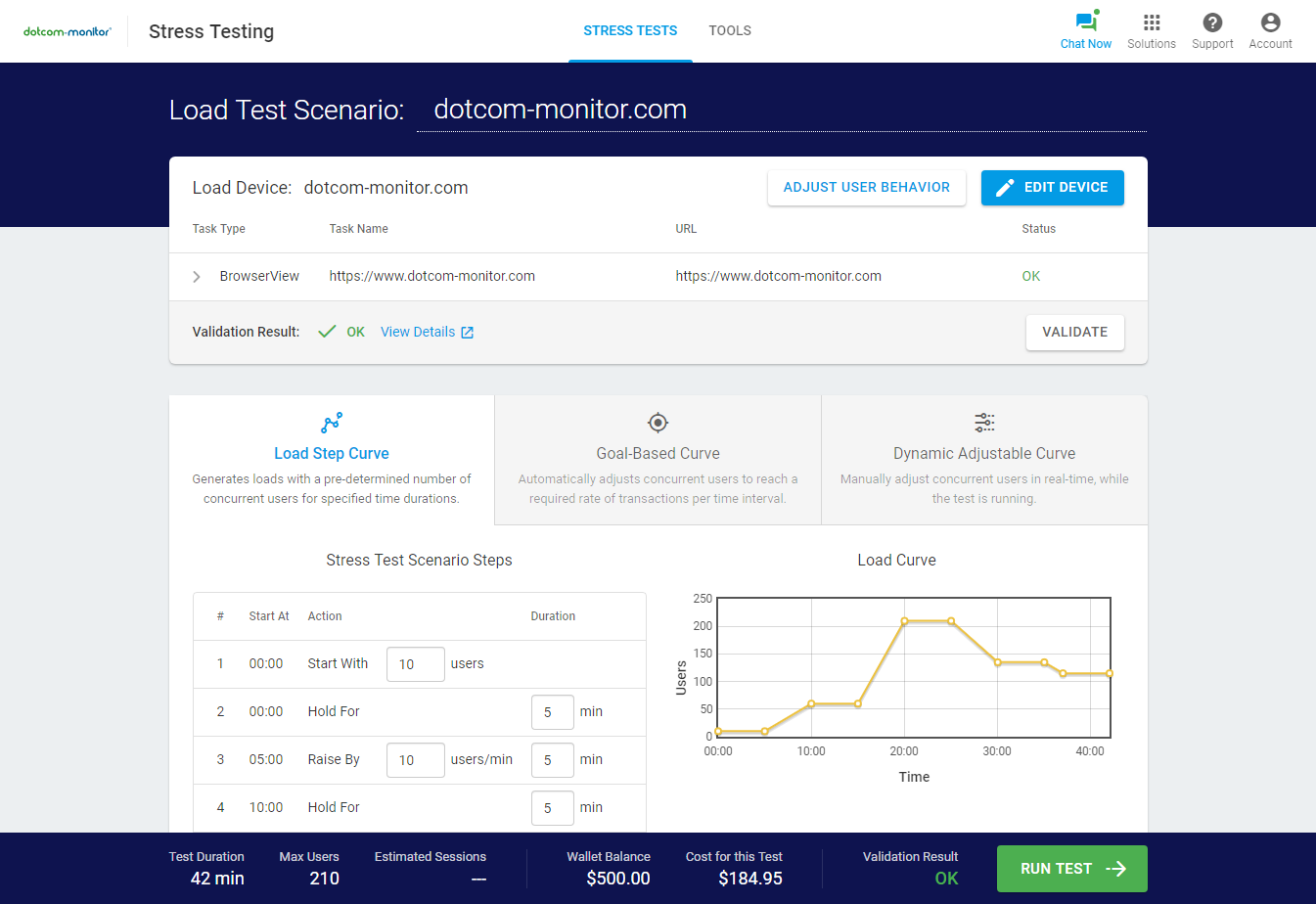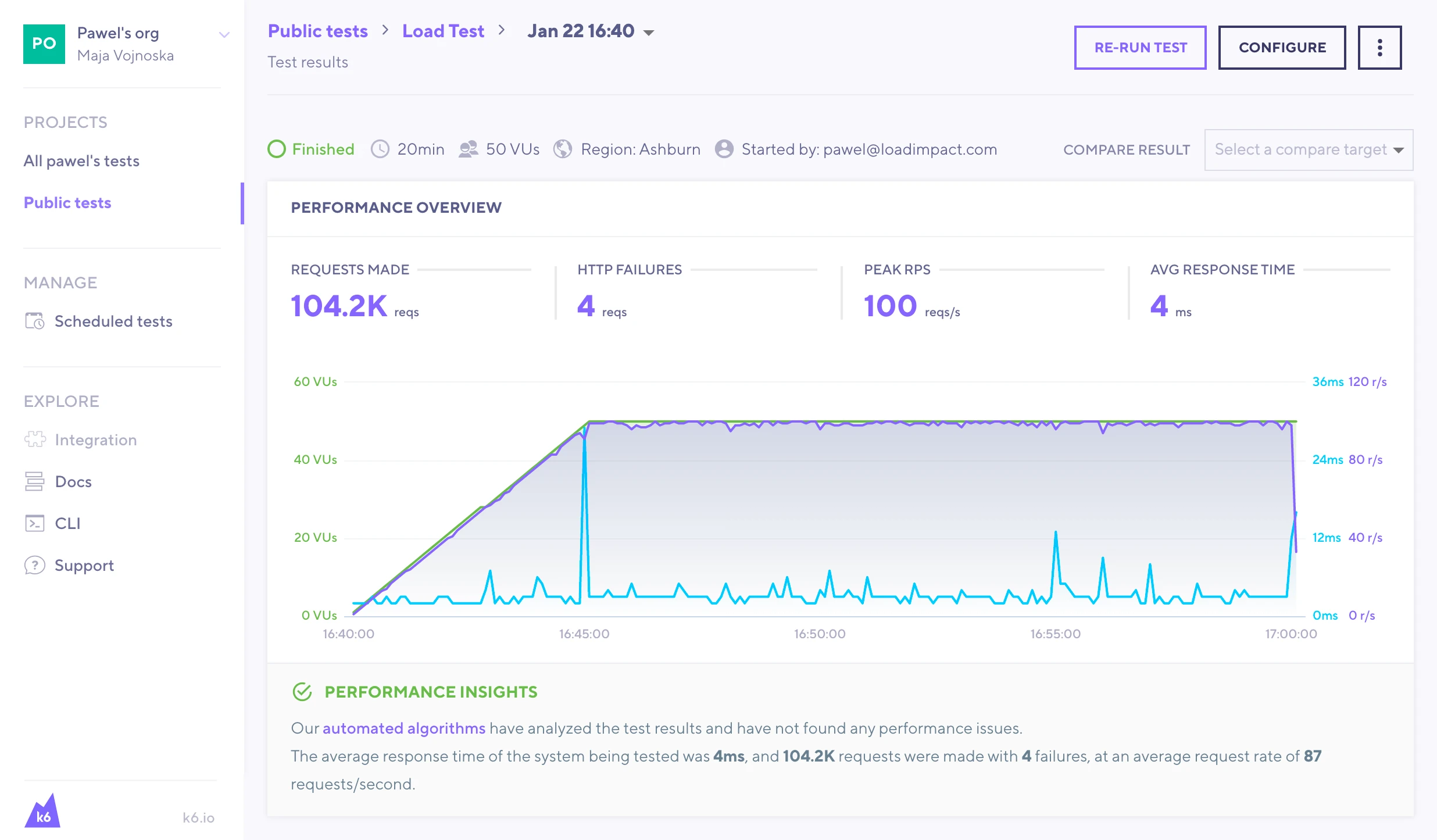Finding the Right Load Testing Tool
The search for a load testing tool can be difficult. Perhaps you already have an option in mind but don’t know whether it’s right for your company. We can help you narrow down your search so that you will be able to choose exactly the right load testing tool.
There are many options available today, with numerous variables between them to consider. This article looks at two: K6 and our own LoadView platform.
While K6 is a solid load testing tool which offers a plethora of services, you may find that it’s not quite right for you because of its complexity. With LoadView, however, you will discover you’ve found a standout, industry leading tool with real browser testing and exceptional support.
We’ll compare the two so you can rest assured LoadView is worth exploring further.
K6 or LoadView – Which is Better?
In short, LoadView leads the load testing industry. Our LoadView platform focuses entirely on the user. Because we offer services on the cloud, you don’t have to worry about having to set up hardware, create scripts or connect globally. LoadView can save you time, money, and headaches. You can use the time you would otherwise spend to set up a complex load testing system and to efficiently test and analyze your results to quickly turn insights into action for your developers.
In order to successfully execute your online business plans, it’s important to know how many users your website or web application can handle. Load testing helps you discover your website’s upper limits. Having determined this, you’ll have the ability to correct any issues in your code and infrastructure so your website can accommodate a large number of users without breaking or slowing down.
The following areas all benefit from regular load testing with LoadView.
Infrastructure
By load testing your website or application, you’ll know whether and which specific aspects require updates. Because hardware installation and new software is expensive, it’s crucial to know whether and when you might really need it.
Scalability
Knowing what happens when you flood your website with a large number of users helps determine what bottlenecks occur and and what scale.
Real User Testing
With real user testing, LoadView allows you to see how your website behaves under real-life conditions using real browsers. Most competitors cannot compete on this front.
Third-Party Services
Third-party services often play a role in websites operating at scale. With load testing, performance analysis of third-party services becomes possible.
K6 allows you to integrate your system with other programs to support automation. It also puts load on the website during the development stage of any website, making it useful to check for possible issues early on and hence give the development team an opportunity to fix issues without a drastic effect on the end product. However, to test with K6, a conversion into JavaScript is a requirement. LoadView, simply put, is easier to use, with expert support and point and click scripting.
Load Testing Scripts with LoadView
With LoadView, you have access to our EveryStep Recorder which enables you to track user functions across time and leverage that data to create scripts. You can simply replay those interactions on your web browser in a test setting. With LoadView you won’t have to worry about downloading extra plugins or web browsers.
With our EveryStep Recorder, you can simulate common user actions such as signing up, adding things to a shopping cart, checking out, and more. LoadView supports testing from around the globe with over 40 web browsers, mobile and desktop.
Load Testing Scripts with K6
On the other hand, K6 uses JavaScript and you have to enter code line by line. This makes knowledge of JavaScript critical. If your development team isn’t already well versed in JavaScript, it takes time and money to train them. Even if they are familiar with JavaScript, this will burn more of their time than the point and click scripting we offer at LoadView. K6 also doesn’t have the ability to test on a real browser, unlike LoadView. This makes it much more difficult to approximate real user behavior.
Both manual scripting and uploading a HAR file is an option with K6. K6 also offers a Google Chrome plugin you can install which will accomplish the process of conversion and uploading the HAR file for testing for you.
Developers also have the ability to test from behind a firewall and to conduct small tests–this makes regular testing possible and allows for bug fixes and performance analysis before the website goes into production.
Comparing K6 & LoadView Load Testing Tools
In comparison, using LoadView’s EveryStep Recorder eliminates the steps mentioned above. You don’t need to dictate the terms of a given test line by line in code, as you have to with K6. LoadView makes scripting as simple as browsing the your website like you normally would. You simply record the session, and LoadView handles the rest.
How Do You Execute a Test with LoadView and K6?
LoadView offers the flexibility to customize your test based on your needs. This means you can meet your goals for load testing, whether you want to raise and lower load levels very quickly or you want to gradually increase the load on your website – it’s all possible with our LoadView platform.
K6 also offers the ability to test on a real browser, but you won’t have the option to lower or raise loads depending on your preference once testing is in progress. LoadView has a lever with which you can test varying behaviors, whereas K6 is static. To change the load scenario with K6, you have to rewrite the code line by line once again. Such flexibility is possible with LoadView, which allows you to pick, point, and play with an easy interface.
Go the Distance with LoadView
Once you’ve decided how many users to deploy as load and the type of testing you want to conduct, you’ll have to decide where you want to test from. Since LoadView operates on the cloud, you have the ability to test from any location in the world. There are numerous global geolocations available if you use LoadView. This helps to give you a holistic view of your website’s performance, making it easier to see how it performs in areas from which you anticipate the most visitors.
Global testing is also possible with K6, but K6 requires you to purchase a separate add-on to do so. Once again, LoadView is simpler in terms of complex testing with an easy interface.
Conclusion
When choosing between K6 and LoadView, there are important considerations to make. With K6, you don’t have the privilege of having an almost automated script-making mechanism, and you might have to invest in additional training to learn JavaScript. This takes time and expertise. On the other hand, with LoadView’s EveryStep Recorder, you can point, click, and relax as our software does the hard work of scripting for you.
With LoadView, you’ll know exactly the regions where you need to put your focus on because you have a view of how real users may interact with your website. Sign up for a free LoadView trial and schedule a one-on-one demo today and let us assist you with your all load testing efforts..


